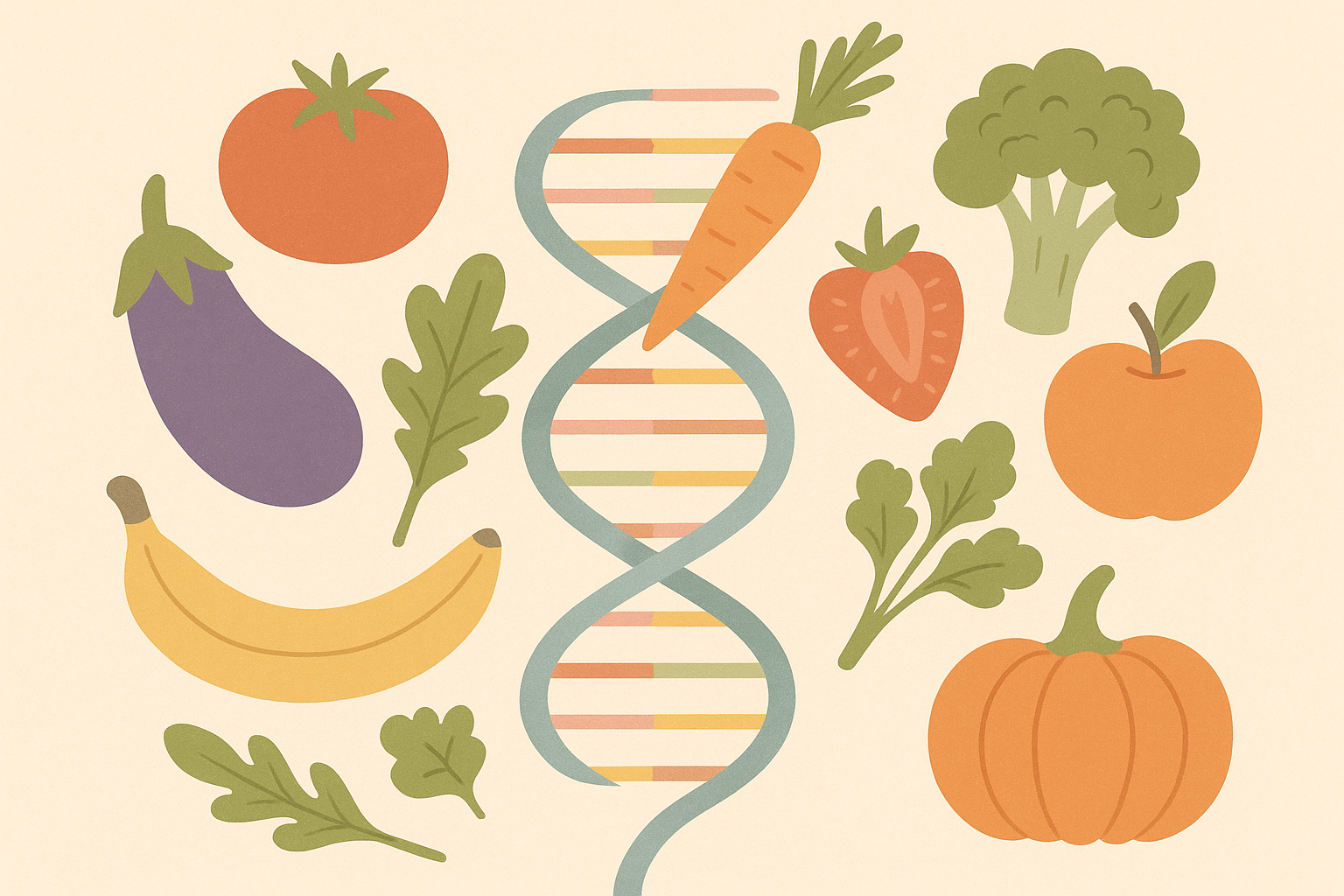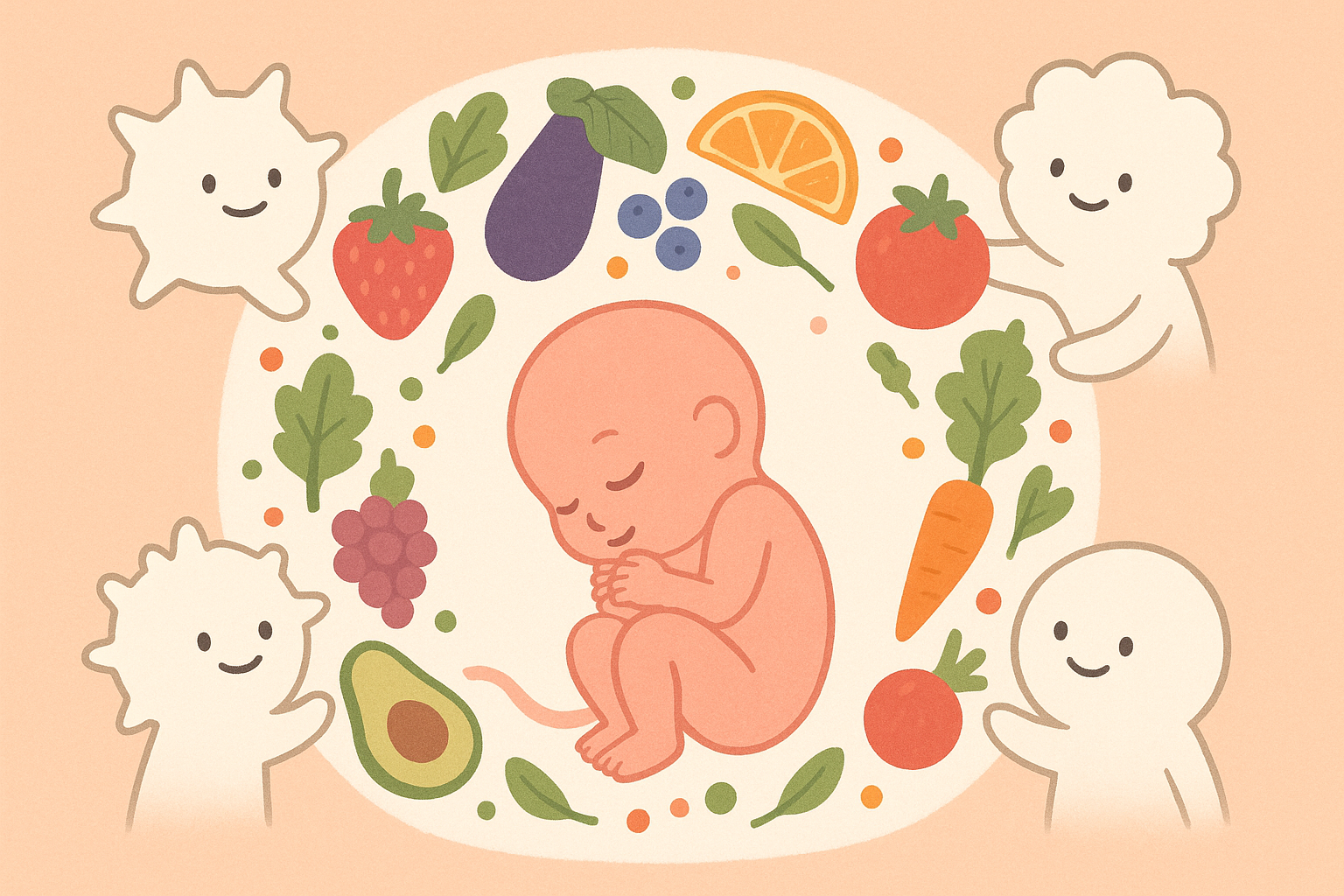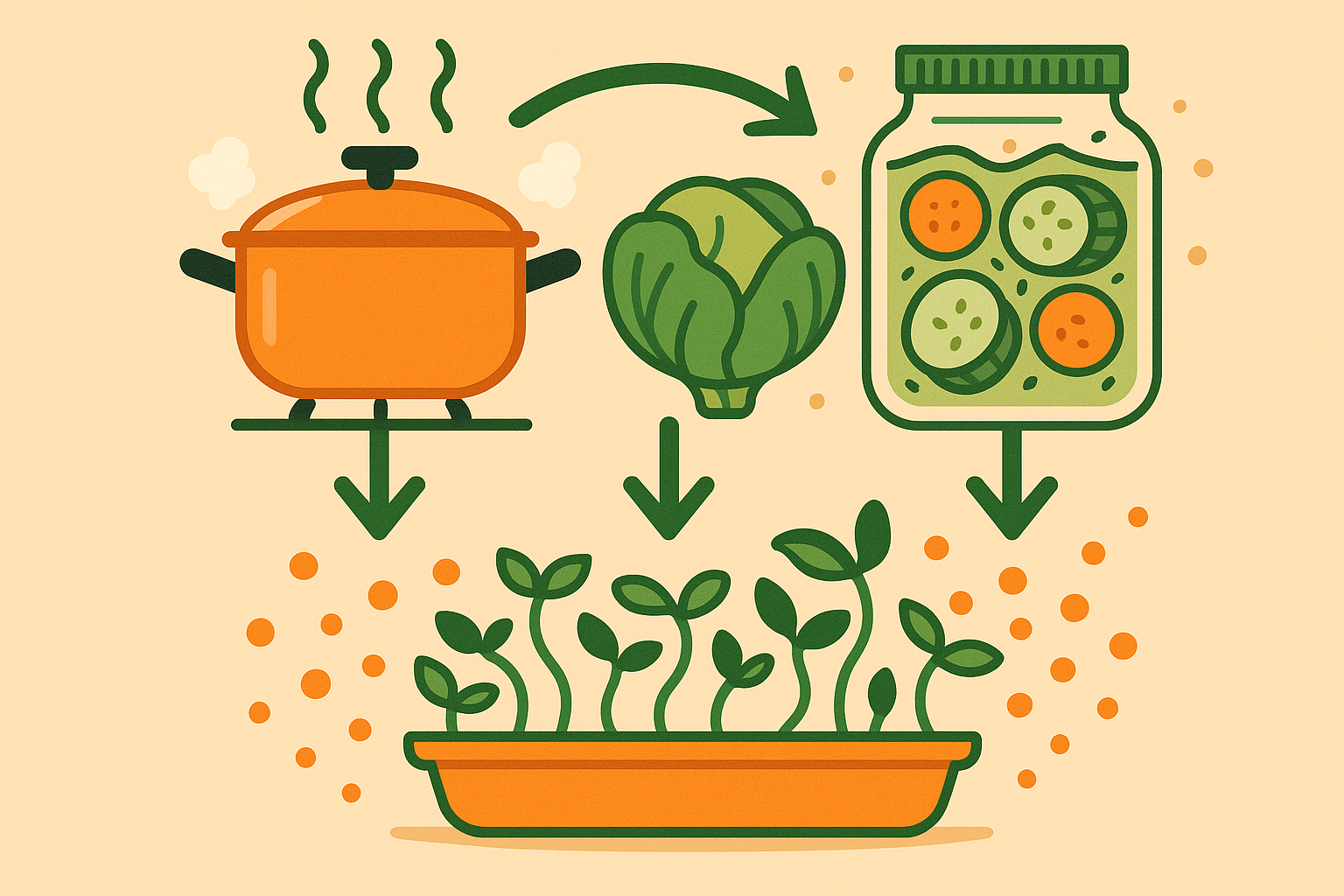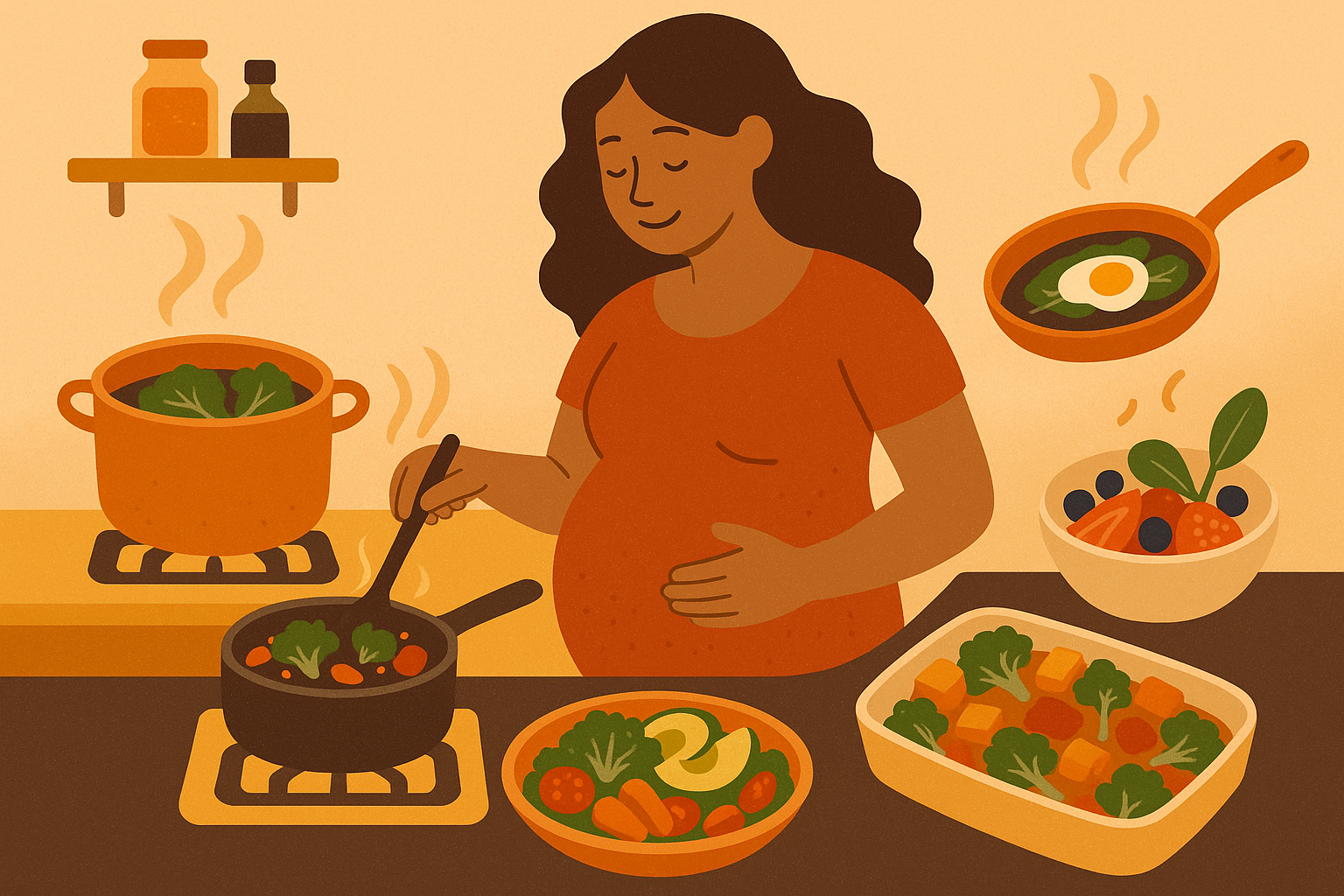Pregnancy Diet Meal Plan: The Science-Backed Blueprint That Programs Your Baby’s Health Before Birth

Table of Contents
- The Hidden Power of Epigenetic Nutrition Programming
- Why Timing Your Meals Like a Circadian Clock Changes Everything
- The Inflammation Resolution Game-Changer Most Doctors Miss
- Bioavailability Hacks That Actually Work During Pregnancy
- Final Thoughts
TL;DR
- Your pregnancy diet meal plan can literally turn genes on and off in your developing baby through strategic nutrient timing and combinations
- Meal timing affects your baby’s future sleep patterns, metabolism, and brain development more than total calories consumed
- Resolving inflammation (rather than just reducing it) prevents pregnancy complications and programs better immune function
- Pregnancy changes how you absorb nutrients – standard healthy eating advice doesn’t account for these hormonal shifts
- Critical developmental windows exist where specific nutrients have exponentially greater impact on fetal programming
During pregnancy, your daily requirements for some nutrients are significantly higher than those for non-pregnant women, requiring extra attention to ensure you’re getting enough key nutrients, including folate, iodine, calcium, iron, omega-3 fatty acids and choline. Understanding these increased needs goes beyond meeting basic requirements – it’s about optimizing your baby’s genetic expression and lifelong health through strategic nutrition timing and combinations.
The Hidden Power of Epigenetic Nutrition Programming
Most pregnancy nutrition advice focuses on basic vitamins and avoiding certain foods, but emerging research reveals how specific food combinations and timing can influence which genes get activated in your developing baby. I was honestly surprised to learn how much our food choices can actually influence which genetic instructions get followed.
I’ll be honest – I felt completely overwhelmed when I first learned about all this. Your pregnancy diet meal plan transforms from simple nutrient counting into strategic genetic programming that can influence your child’s lifelong health patterns. Some days I barely managed to eat anything, let alone time my nutrients perfectly, but even small improvements made a real difference.
Those Critical Windows Everyone’s Missing
Research shows specific developmental periods when certain nutrients have dramatically greater impact on fetal programming than at other times. Missing these windows doesn’t spell disaster (trust me, I missed plenty), but hitting them strategically can optimize your baby’s development in ways that last a lifetime.
Think of your baby’s genes like a piano – nutrition helps decide which keys get played. These aren’t arbitrary timeframes – they’re based on when major organ systems and metabolic pathways are being established.
| Trimester | Ideal Scenario | Real Life Version | When You’re Barely Surviving |
|---|---|---|---|
| First (Weeks 3-8) | Neural Trinity Smoothie daily | Prenatal vitamin + whatever stays down | Crackers + folic acid supplement |
| Second (Weeks 13-26) | Precise chromium timing | Nuts with lunch when you remember | Any whole grain, any time |
| Third (Weeks 27-40) | Strategic DHA with dinner | Fish twice a week, algae oil backup | Fish oil capsule, no judgment |
First Trimester: When Your Baby’s Brain Gets Its Blueprint (Weeks 3-8)
During neural tube formation, the combination of folate with choline and betaine creates synergistic effects that program brain development patterns. We’re talking about optimizing cognitive potential, and the timing of these nutrients during this narrow window matters more than the total amount you consume throughout pregnancy.
Understanding how much caffeine is safe during pregnancy becomes even more crucial during this critical neural development window when your baby’s brain is forming its foundational patterns.
Here’s what really got my attention: taking folate alone isn’t enough. You need that trio working together during those specific weeks when your baby’s neural pathways are forming. I started combining spinach (folate) with eggs (choline) and beets (betaine) in my morning smoothies during this period – though I’ll be honest, my first attempt tasted like a garden threw up.
Research shows that choline plays a crucial role during pregnancy, helping support brain and spinal cord development – modifying development pathways into childhood and potentially adulthood. Low choline intake levels are associated with an increased risk of neural tube defects in women with adequate folate levels, and a failure to provide choline during the first 1000 days post-conception could result in lifelong deficits in brain function even if adequate choline is consumed subsequently. Australian Eggs
The Neural Trinity Smoothie (Improved Version): Blend 2 cups fresh spinach (folate), 1 whole egg (choline), 1 small roasted beet (betaine), 1 banana, and 1 cup almond milk. Consume within 30 minutes of waking during weeks 3-8. Pro tip: roast the beets first – raw ones taste like dirt.
Second Trimester: Programming Your Baby’s Metabolism (Weeks 13-26)
This developmental window determines your baby’s future relationship with insulin and glucose metabolism. Strategic meal timing and specific nutrient ratios during this period can program lifelong metabolic health, potentially preventing diabetes and obesity later in life.
Your baby’s pancreas is learning how to respond to glucose during this time. Every meal you eat is essentially teaching their system what “normal” looks like. The metabolic imprinting that happens now affects how your child’s body will process food for decades.
The Nutrient Network Effect
Individual nutrients don’t work in isolation – they function in complex networks where some enhance each other while others compete for absorption. Understanding these relationships allows you to design meals that amplify effectiveness rather than creating internal competition.
Most prenatal vitamins completely ignore these interactions (which honestly drives me crazy). Your gut bacteria are basically having a group chat with your baby through these nutrient networks. This network approach can increase nutrient utilization by 200-300% compared to random supplementation.
The Iron-Vitamin C-Copper Connection That Changes Everything
The precise ratio and timing of iron, vitamin C, and copper determines iron absorption rates, influences fetal brain oxygenation patterns and cognitive development potential. Getting this triangulation right can prevent anemia while optimizing brain development, but the timing and ratios are crucial for maximum benefit.
I learned this the hard way when my iron levels stayed low despite supplementation. Turns out I was drinking tea (which blocks iron) with my iron-rich meals and not getting enough copper to help with utilization. My doctor looked at me like I was crazy when I asked about meal timing, but the results spoke for themselves.
Iron Absorption Optimization Checklist:
- ☐ Consume iron-rich foods with vitamin C sources (citrus, bell peppers, strawberries)
- ☐ Include copper-rich foods (nuts, seeds, dark chocolate) within same meal
- ☐ Avoid tea, coffee, and calcium supplements within 2 hours of iron intake
- ☐ Cook in cast iron cookware when possible
- ☐ Combine with foods containing heme iron (meat, fish) for enhanced absorption
Your Gut Bacteria Are Talking to Your Baby
Your gut microbiome directly communicates with your developing baby through metabolites that cross the placental barrier. This communication affects immune system development, brain formation, and future allergy resistance.
While planning your pregnancy nutrition, understanding 5 simple ways to beat bloat and improve digestion can help optimize your gut health for better nutrient absorption and bacterial balance during this crucial time.
This blew my mind – your bacteria are literally having conversations with your baby’s developing systems. My husband thought I was going overboard with the Jerusalem artichokes – “Can’t you just eat regular potatoes?” he’d ask while I’m explaining bacterial metabolites at 7 AM. Fair point, honey.
Recent research has shown just how quickly dietary changes can impact gut health. “A study explored how diet can quickly change the gut microbiota and improve health” OnlyMyHealth reports. Researchers found that increasing dietary fiber and eating more fermented foods led to greater diversity of gut bacteria and lower inflammation in just a few weeks, highlighting that even short-term changes in what you eat can make a big difference in gut health.
The 12-Week Microbiome Makeover
A targeted protocol using specific fiber types and fermented foods can establish optimal bacterial strains that support fetal immune system development. We’re talking about cultivating specific bacterial communities that produce the right metabolites for pregnancy. Starting this protocol pre-conception provides the best results, but don’t stress if you’re already pregnant.
I started this protocol three months before trying to conceive, focusing on Jerusalem artichokes, sauerkraut, and kefir. The difference in my digestion and energy levels was noticeable within weeks. Some weeks I nailed it, other weeks I just tried to eat something fermented and called it good.
Beyond Probiotics: The Metabolite Game
Focusing on foods that generate specific bacterial metabolites such as butyrate and propionate can directly influence fetal brain development and future allergy resistance. These metabolites are what actually cross the placental barrier and affect your baby – the bacteria themselves don’t make the journey.
Strategic fiber choices can increase production of beneficial metabolites by 400-500%. Foods such as resistant starch from cooled potatoes and inulin from garlic became staples in my pregnancy diet meal plan once I understood this connection. My sister rolled her eyes when I started talking about metabolites. “You’re turning into one of those people,” she said. Maybe I was, but when my energy improved, she started asking for my fermented vegetable recipes.
Why Timing Your Meals Like a Circadian Clock Changes Everything
Your body’s internal clock controls far more than sleep – it regulates nutrient absorption, hormone production, and fetal development patterns. Most people eat when it’s convenient, but during pregnancy, when you eat can be as important as what you eat.
Look, I ate cereal for dinner more times than I care to admit, but understanding these principles helped me make better choices when I had the energy to plan ahead.
Programming Your Baby’s Internal Clock Before Birth
Your eating patterns literally set your baby’s circadian rhythms while they’re still in the womb. Strategic meal timing can program optimal sleep patterns and metabolic rhythms that will benefit your child for years.
Want a baby who sleeps well? Start programming their circadian rhythm now through your meal timing. This maternal-fetal clock entrainment happens through hormonal signals that cross the placenta and influence your baby’s developing biological clock.
The Morning Protein Power Move
Consuming 25-30 grams of complete protein within 30 minutes of waking synchronizes maternal cortisol patterns and programs fetal circadian rhythm development. This morning protein loading strategy helps establish healthy wake-up patterns and metabolic timing that your baby will carry into childhood.
Explaining to my mom why I was eating eggs at exactly 6:47 AM was… interesting. “In my day, we just ate when we were hungry,” she’d say. And you know what? Some days I did too, and that’s okay.
The Circadian Sync Breakfast: 3 scrambled eggs with 2 tablespoons hemp seeds and spinach, consumed within 30 minutes of waking. This provides 28 grams of complete protein to synchronize your cortisol rhythm and program your baby’s sleep-wake cycle. If you’re too nauseous for eggs, Greek yogurt with nuts works too.
Evening Tryptophan: Your Baby’s Sleep Programming
Strategic consumption of tryptophan-rich foods 3-4 hours before bedtime optimizes maternal melatonin production, which crosses the placenta and begins programming fetal sleep-wake cycles. We’re talking about establishing the hormonal patterns that will help your baby develop healthy sleep rhythms.
Turkey, pumpkin seeds, and tart cherries became my go-to evening snacks. The timing window is crucial – too close to bedtime and it won’t work effectively.
The Midday Chromium Sweet Spot
Chromium-rich foods consumed between 11 AM-2 PM align with natural insulin sensitivity peaks, optimizing glucose tolerance and reducing gestational diabetes risk. This timing takes advantage of your body’s natural metabolic rhythms to maximize nutrient utilization and blood sugar control during pregnancy’s most challenging metabolic period.
Broccoli, whole grains, and nuts during this window helped me pass my glucose tolerance test with flying colors.
Riding the Hormonal Waves
Understanding how meal timing affects pregnancy hormones allows you to eat in ways that support rather than disrupt these delicate systems. Pregnancy involves complex hormonal cascades that can be optimized through strategic nutrition timing, reducing common symptoms while supporting healthy development.
Pregnancy hormones are intense – working with them instead of against them makes everything so much easier.
Taming the HCG Beast
Early pregnancy nausea isn’t just about food aversions – it’s your body’s response to HCG fluctuations. Specific eating patterns can minimize these fluctuations and reduce morning sickness severity by up to 60%.
All my careful meal timing went out the window when morning sickness hit. The only thing that didn’t make me nauseous was plain bagels and ginger ale. My perfectly planned nutrient ratios became “whatever I can keep down.” And you know what? My baby turned out fine.
The Inflammation Resolution Game-Changer Most Doctors Miss
Here’s what most people don’t understand: some inflammation during pregnancy is necessary and healthy. The goal isn’t to eliminate it but to help your body resolve it properly.
Pregnancy involves controlled inflammation for proper implantation and development, but chronic inflammation leads to complications. Most advice focuses on reducing inflammation, but the real key is promoting inflammation resolution – actively helping your body complete the inflammatory process properly.
The SPM Revolution
Specialized Pro-Resolving Mediators (SPMs) are compounds your body makes from omega-3 fatty acids that actively resolve inflammation rather than just suppressing it. I’d never heard of SPMs until I started researching this, but they’re absolute game-changers for pregnancy health.
Certain food combinations can dramatically increase SPM production during pregnancy, leading to better outcomes and fewer complications. This represents a fundamental shift from anti-inflammatory to pro-resolution nutrition strategies.
Getting Your Omega Ratios Right
The standard advice to “take fish oil” misses the crucial EPA to DHA ratio needed for optimal SPM production during different pregnancy stages. First trimester requires different ratios than third trimester based on developmental needs and hormonal changes.
Understanding these ratios can increase SPM production by 200-300% compared to generic supplementation. First trimester, I focused on higher EPA ratios (sardines, anchovies). Third trimester shifted to higher DHA (salmon, algae oil) for brain development.
A comprehensive meal plan approach shows that this meal plan provides 10 eggs per week and provides at least 2 serves of fruit and 2.5 serves of dairy per day, demonstrating how strategic food combinations can meet multiple nutritional needs simultaneously while supporting inflammation resolution. Australian Eggs
The Polyphenol-Omega Power Combo
Specific plant polyphenols can increase the conversion of omega-3s into SPMs by up to 300%. Foods such as pomegranate, green tea, and turmeric consumed with omega-3 sources create this synergistic effect, dramatically improving inflammation resolution capacity.
The timing and combinations are crucial for maximum benefit. Turmeric with black pepper in my salmon dishes, or pomegranate seeds with my sardine salads became regular combinations in my pregnancy diet meal plan.
Budget-Friendly Omega Boost: Instead of expensive fish oil supplements, try canned sardines or mackerel (seriously, they’re like $2 and packed with omega-3s). Add some turmeric and black pepper, an d you’ve got a powerhouse anti-inflammatory meal for under $5.
Teaching Your Immune System to Play Nice
Your immune system must perform a delicate balancing act during pregnancy – protecting you while accepting your baby’s “foreign” DNA. It’s fascinating how your body learns to tolerate your baby while still protecting you both from real threats.
Specific nutrients can optimize this immune tolerance without compromising your ability to fight infections. This programming affects pregnancy outcomes and your baby’s future immune function and allergy resistance.
The Regulatory T-Cell Support System
Certain prebiotic fibers and polyphenols specifically feed beneficial bacteria that produce metabolites supporting regulatory T-cells, which are crucial for preventing pregnancy complications such as preeclampsia. This targeted approach can reduce complication risk by 40-50% while supporting healthy immune development in your baby.
Jerusalem artichokes, green tea, and fermented vegetables became my regulatory T-cell support squad. If you can only manage one thing from this list, fermented vegetables are probably your best bet – they’re cheap, last forever in the fridge, and you only need a forkful.
The Immune Balance Bowl: Combine 1 cup roasted Jerusalem artichokes, 2 cups mixed fermented vegetables (sauerkraut, kimchi), 1 tablespoon olive oil, and a sprinkle of turmeric. Consume 3-4 times weekly to support regulatory T-cell function and immune tolerance.
Bioavailability Hacks That Actually Work During Pregnancy
Your pregnant body absorbs nutrients completely differently than your non-pregnant body. Most nutrition advice ignores this crucial fact, which honestly frustrated me when I was trying to figure out why my supplements weren’t working.
Pregnancy dramatically alters your digestive capacity and nutrient absorption patterns through hormonal changes that affect stomach acid, enzyme production, and intestinal transit time. Understanding these changes allows you to modify food preparation and combination methods to maximize nutrient uptake when your body needs it most.
How Pregnancy Changes Your Digestive Game
Hormonal changes during pregnancy affect every aspect of digestion, from stomach acid production to intestinal transit time. These changes require different nutritional strategies than standard healthy eating advice.
Progesterone basically rewrites your digestive rulebook – you need to adapt your eating strategy accordingly. Understanding which nutrients benefit from these changes and which are hindered allows for strategic meal planning that maximizes absorption.
Working with Progesterone’s Digestive Slowdown
Rising progesterone levels slow digestion, which can improve absorption of some nutrients while hindering others. Fat-soluble vitamins benefit from this slowdown, while water-soluble vitamins may need different timing strategies.
Understanding which nutrients benefit from slower digestion allows you to time their consumption strategically for maximum uptake. I learned to take my fat-soluble vitamins (A, D, E, K) with larger meals when digestion was naturally slower, but spread water-soluble vitamins throughout the day.
During the second trimester, when most women experience a boost in energy and the baby starts growing rapidly, nutrition becomes crucial for fetal growth and development, with the body requiring strategic nutrient timing to accommodate hormonal changes that affect absorption patterns. IVF Clinic
Pregnancy Digestion Adaptation Checklist:
- ☐ Take fat-soluble vitamins (A, D, E, K) with your largest meal
- ☐ Spread water-soluble vitamins (B-complex, C) throughout the day
- ☐ Consume iron supplements on an empty stomach when possible
- ☐ Pair calcium with magnesium for better absorption
- ☐ Time fiber intake to support slower transit time
- ☐ Avoid large fluid intake with meals to prevent diluting stomach acid
Absorption Enhancement Techniques That Actually Work
Simple food preparation and combination methods can dramatically increase nutrient bioavailability during pregnancy when absorption patterns are altered. These techniques work specifically with pregnancy’s changed digestive environment to maximize nutrient uptake without requiring expensive supplements or complicated protocols.
Small changes in how you prepare and combine foods can double or triple nutrient absorption during pregnancy. I probably spent an extra $20-30 per week on this approach, which felt worth it for the energy boost alone.
The Fermentation Advantage
Fermenting certain foods before consumption can pre-digest proteins and create bioactive peptides that are more easily absorbed during pregnancy’s altered digestive state. This technique is particularly effective for plant proteins and minerals that are typically harder to absorb.
Understanding the benefits of fermented foods becomes even more important when you consider are drinking vinegars the next big thing for gut health, as these fermented beverages can support digestive health and nutrient absorption during pregnancy.
Fermentation can increase bioavailability by 150-400% for key pregnancy nutrients. I started fermenting my own vegetables and making kefir smoothies. The difference in how I felt was remarkable – better energy, less bloating, improved nutrient status.
Budget-Friendly Fermentation: Skip the expensive superfood powders and stick with basic sauerkraut from the grocery store. Frozen is your friend too – frozen spinach has the same folate as fresh, costs half as much, and doesn’t guilt-trip you when it goes bad.
Temperature Tricks for Maximum Nutrition
Specific cooking temperatures and methods can increase the bioavailability of key pregnancy nutrients such as lycopene, beta-carotene, and folate by 200-500%. Understanding which nutrients are enhanced by heat and which are destroyed allows for strategic food preparation that maximizes nutritional value while maintaining food safety during pregnancy.
Lightly steaming spinach increased folate availability, while roasting tomatoes boosted lycopene absorption. These simple temperature adjustments made a huge difference in my nutrient intake. The week I tried to be perfect with every cooking method, I ended up stress-eating donuts in my car because the pressure was insane.
The importance of gut health during pregnancy is gaining recognition, with experts noting that “fibre feeds the microbiome, producing short-chain fatty acids like acetate, butyrate, and propionate” OnlyMyHealth reports. These compounds are responsible for fine-tuning metabolism, lowering blood sugar, reducing cholesterol, suppressing inflammation, and enhancing immunity – all crucial for optimal pregnancy outcomes.
For expectant mothers looking to optimize their supplement intake alongside whole foods, understanding 3 dietary supplements you should take daily according to a nutritionist can provide valuable guidance on filling nutritional gaps that even the most strategic meal planning might miss.
When you’re ready to optimize your pregnancy nutrition with high-quality, bioavailable supplements, Organic Authority’s carefully curated selection can fill the gaps in even the most strategic pregnancy diet meal plan. Their marine collagen, for example, offers superior bioavailability compared to other sources – exactly the kind of science-backed effectiveness this approach demands.
The Supplements That Are Actually Worth the Money:
- A good prenatal vitamin (non-negotiable)
- Omega-3 with the right EPA/DHA ratios
- Magnesium (most people are deficient)
- Skip the expensive greens powders – eat actual vegetables when you can
Final Thoughts
Look, I’m not going to lie and say I followed every single recommendation perfectly throughout my pregnancy. Some weeks I was on top of my nutrient timing, other weeks I lived on crackers and hoped for the best.
What I learned is that this information isn’t a rigid rulebook – it’s a toolkit. Use what works, adapt what doesn’t, and give yourself grace when life gets in the way. Pregnancy is hard enough without adding the pressure to be nutritionally perfect.
The beautiful thing about this approach is that even small improvements can make a difference. Maybe you can’t manage the perfect circadian timing, but you can add some hemp seeds to your morning yogurt. Maybe Jerusalem artichokes aren’t happening, but you can throw some sauerkraut on your sandwich.
Your baby doesn’t need you to be perfect – they need you to be healthy and sane. If stressing about meal timing is making you miserable, take a step back. A relaxed mom eating imperfectly is better than a stressed mom eating “optimally.”
Start with one or two strategies that feel manageable. Build from there if you want to, or stick with what’s working. Trust your body, trust your instincts, and remember that humans have been having healthy babies long before we knew about SPMs and circadian nutrition.
If You Only Do Three Things:
- Take a good prenatal vitamin
- Eat protein within an hour of waking up
- Include some fermented foods when you can
That’s it. Everything else is bonus points.
You’ve got this, mama.










